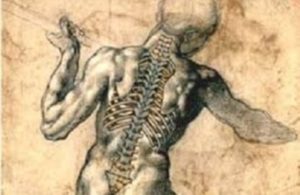 “….Possiamo affermare che la presenza di un disturbo del continuum miofasciale, durante i movimenti e i gesti quotidiani, possa alterare lo stato emotivo della persona, come studi rivelano in presenza di fibromioalgia, e in altre situazioni patologiche.29-33 E’ possibile ipotizzare che si instauri un’allodinia emotiva scaturita da costanti afferenze miofasciali non fisiologiche, la quale porti lo stato emotivo e la patologia miofasciale sullo stesso livello. Infatti, la stessa posizione del corpo stimola le aree dell’emotività, e la presenza di alterazioni miofasciali porta a delle alterazioni posturali.34-37 Un sistema miofasciale in disfunzione altera la postura e lo stato emotivo…..”
“….Possiamo affermare che la presenza di un disturbo del continuum miofasciale, durante i movimenti e i gesti quotidiani, possa alterare lo stato emotivo della persona, come studi rivelano in presenza di fibromioalgia, e in altre situazioni patologiche.29-33 E’ possibile ipotizzare che si instauri un’allodinia emotiva scaturita da costanti afferenze miofasciali non fisiologiche, la quale porti lo stato emotivo e la patologia miofasciale sullo stesso livello. Infatti, la stessa posizione del corpo stimola le aree dell’emotività, e la presenza di alterazioni miofasciali porta a delle alterazioni posturali.34-37 Un sistema miofasciale in disfunzione altera la postura e lo stato emotivo…..”
“…We can say that the presence of a disorder of the myofascial
continuum, during everyday movements and activities, can alter
the emotional state of the person, as studies reveal in the presence
of fibromyalgia and in other pathological situations [29–33]. It is
possible to suppose that an emotional allodynia could be established
originating from constant myofascial non-physiological afferents,
which would bring the emotional state and the myofascial
pathology to the same level. In fact, the very position of the body
stimulates the areas of emotionality, and the presence of myofascial alterations leads to postural alterations [34–37]. A dysfunctional
myofascial system alters the posture and the emotional state……”
Bordoni B, Marelli F. Emotions in motion: myofascial interoception. Complement Med Res 2017; 24(2).

